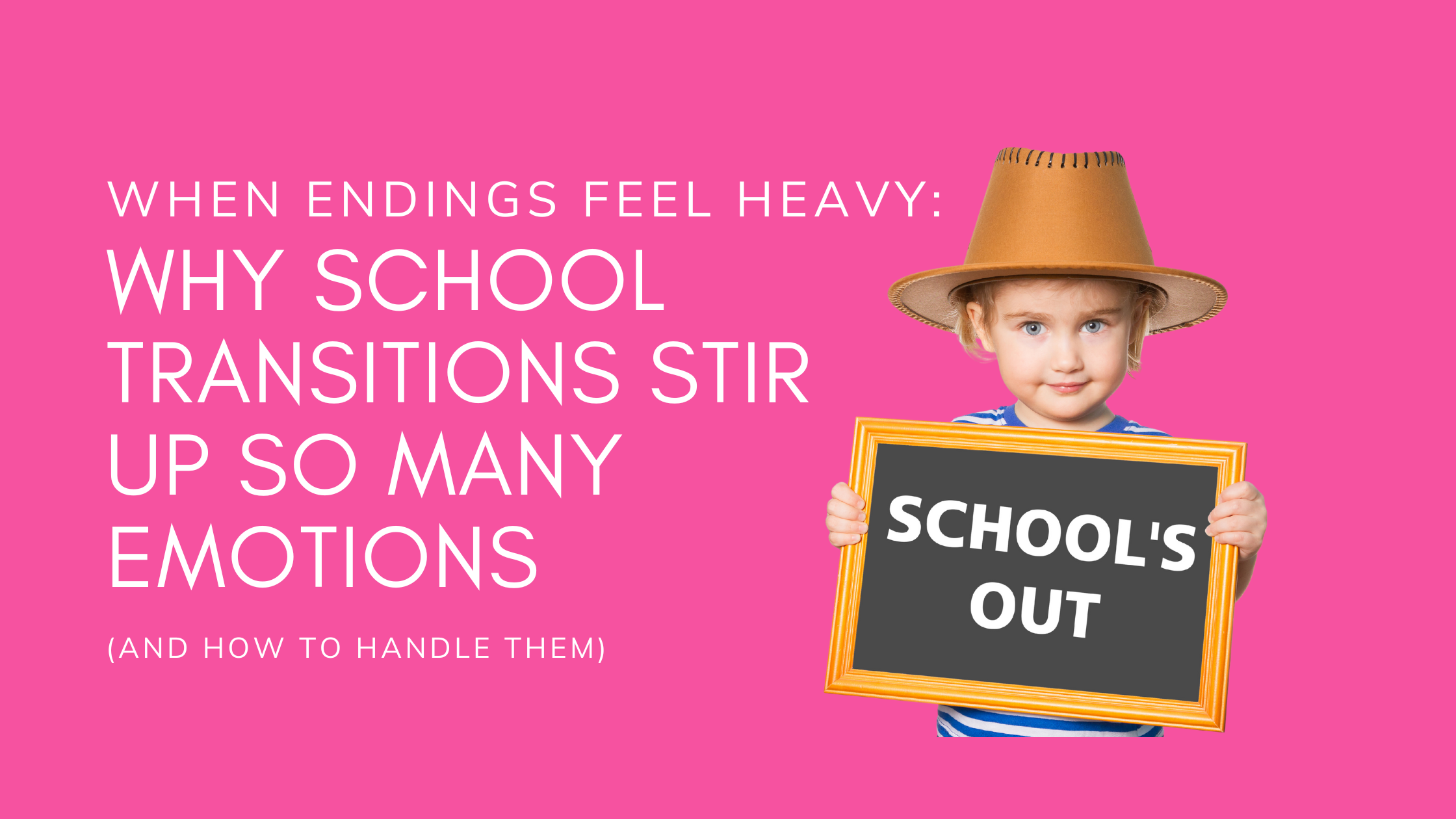When Endings Feel Heavy: Why School Transitions Stir Up So Many Emotions (And How to Handle Them)
If you’ve found yourself feeling unexpectedly emotional this week as your child finishes the school year - especially if they’re leaving nursery, Year 6 or even sixth form - you’re not alone.
Maybe you cried in the car after the leavers’ assembly. Maybe your chest tightened as you packed the last lunchbox. Maybe you're trying to hold it together while your child swings between excitement and tears.
These feelings can catch us off guard. But there’s a reason this end-of-term transition feels so big: it is. It marks the closing of a chapter - for them and for us.
Let’s take a moment to unpack what’s going on under the surface and how you can support both yourself and your child through this emotionally charged time.
Why Does This Feel So Hard?
It’s easy to dismiss our emotions as “just being a bit sentimental” - but there’s actually a lot going on beneath the surface. What we’re experiencing is a very real psychological and physiological response to change, loss, and uncertainty.
1. We’re wired to resist change
Human brains are naturally drawn to familiarity. We build habits, routines, even neural pathways around what we know. When something ends - especially something that’s anchored our daily lives (like the school run, pick-up chats, or packed lunches) - our brain sees that as a disruption. And that disruption triggers our stress response system.
Even if we know the change is positive, our emotional brain doesn’t always follow logic.
2. Transitions trigger identity shifts
When our children move on, we do too - whether we want to or not. A child leaving Year 6 isn’t just saying goodbye to their classroom. We, as parents, are saying goodbye to a version of ourselves too. The “primary school mum,” the hand-holder at the gates, the lunchbox-packer - she’s changing. And with that shift, we often experience a quiet identity loss.
Psychologists call this ‘ambiguous loss’ - the grief we feel when something changes but isn’t entirely gone. It’s complex, and very real.
3. Mirror neurons mean we feel what they feel
Our children’s emotions are contagious. Literally. Thanks to mirror neurons in the brain, when we see our child cry or wobble or pull away, our own emotional systems light up in response. This beautiful design helps us connect and empathise - but it also means we’re feeling their big emotions and our own at the same time.
No wonder it all feels so intense.
So What Can We Do With These Feelings?
Here’s the truth: you don’t need to push them down or “get over it.” But you can support yourself through them with compassion and care.
1. Name it to tame it
Give your feelings a name. "I feel a bit lost today." "I feel tender." "This feels like a goodbye." Labelling emotions helps move them from the emotional centres of the brain (amygdala) to the thinking centres (prefrontal cortex), reducing intensity. It’s a simple act, but surprisingly powerful.
2. Create tiny rituals of closure
Big emotions often need somewhere to go. Try:
Writing your child a short letter about this chapter closing
Looking through old school photos together
Walking past the school one last time and saying “thank you”
Rituals help the brain make sense of endings. They give form to the formless feelings.
3. Don’t skip self-care
This isn’t about bubble baths and candles (though if that helps, go for it). It’s about regulating your nervous system - making space to feel without overwhelm. Try:
A slow walk outdoors
A 4-6 breathing pattern (breathe in for 4, out for 6)
A 10-minute quiet moment with a cup of tea
Small resets like these tell your brain: I’m safe. I can cope.
And What About Our Children?
Here’s the twist - our children are often feeling just as wobbly, and it shows up in all sorts of ways: excitement, clinginess, anger, tears, withdrawal. Just like us, they’re navigating change, loss and uncertainty.
Here are some ways you can help them navigate this emotional uncertainty:
1. Normalise And Name It
Use phrases like:
“It’s okay to feel sad, even when we’re excited.”
“Saying goodbye to something special can feel hard.”
“You’re not alone in this - lots of people feel emotional when things change.”
These messages give them permission to feel without shame.
2. Stay Close - But Steady
You don’t need to fix the feelings, just hold space for them. Predictable routines, one-on-one time, and quiet connection (even if it’s just watching TV together) can create a safe base when everything else feels new.
3. Regulate yourself first
Children co-regulate through us. That means if you’re anxious, overwhelmed or disconnected, they’ll pick up on it. It’s okay to share your feelings - just keep it age-appropriate. A simple “I feel a bit emotional too, it’s a big time for both of us” is enough.
Letting Yourself Be Human
We spend so much time preparing our children for transitions - but we often forget to prepare ourselves. And then we wonder why we feel so wobbly, why we’re crying in the car park, or why we feel totally flat after the last school run.
But this isn’t failure. It’s evidence that you care deeply.
And that care? That love? That’s what makes you a good mum - not whether you held it all together with a smile.
Want to chat about how I can help you and your child navigate this next chapter?
Book a free discovery call.


